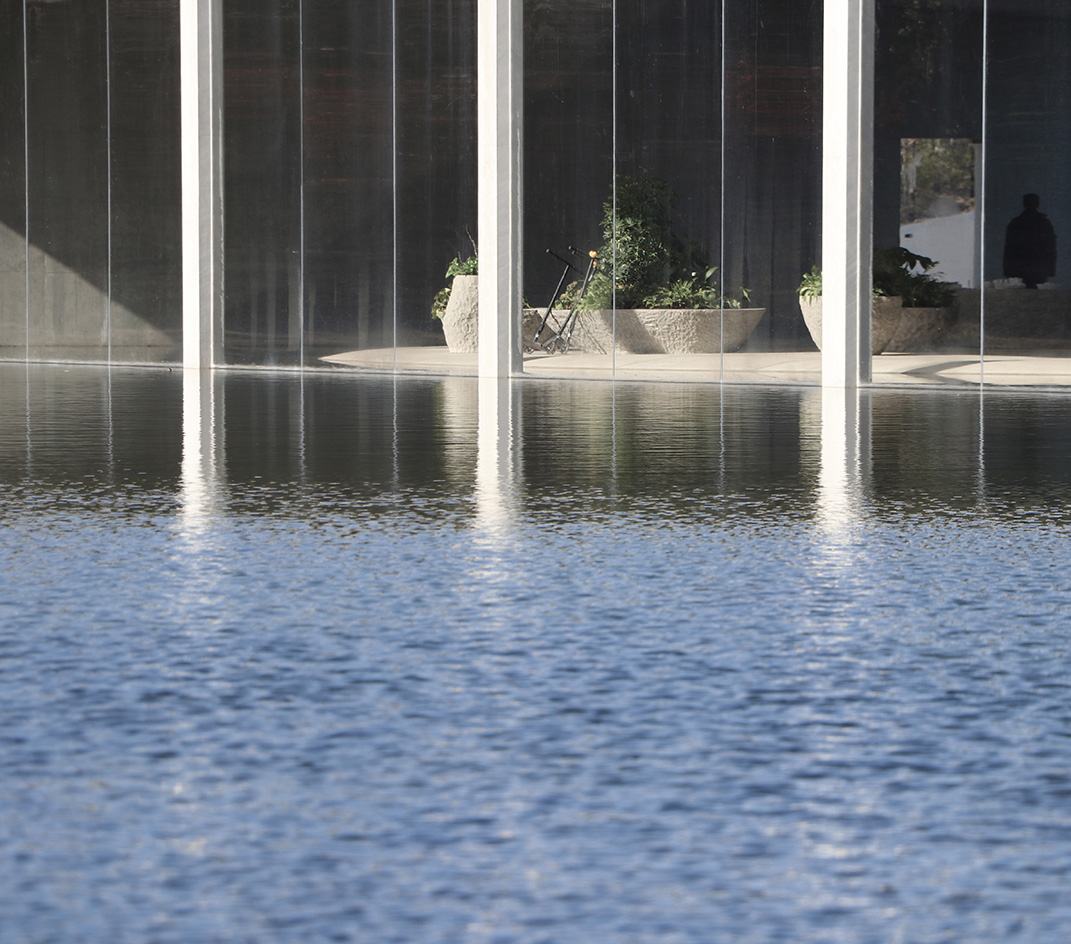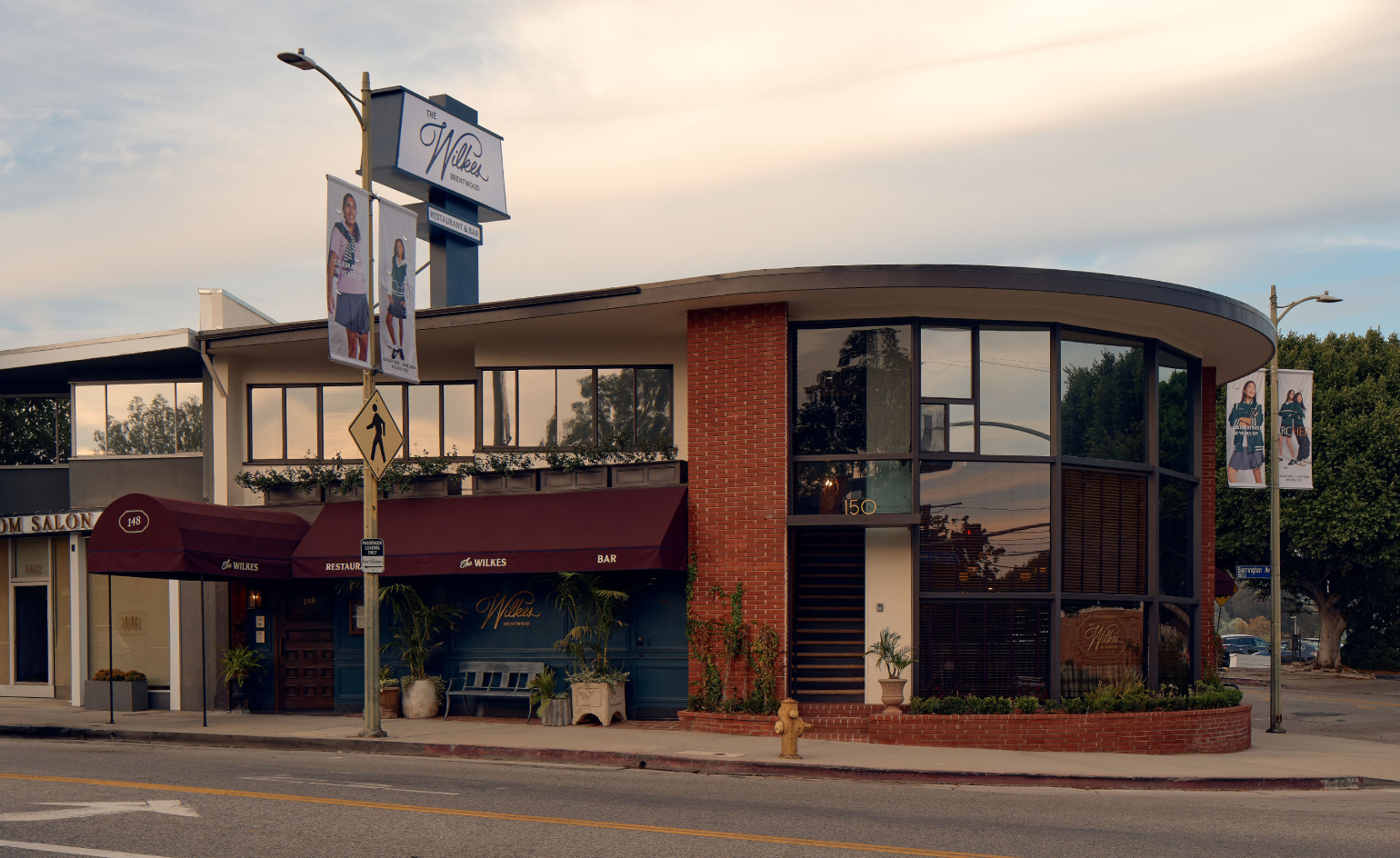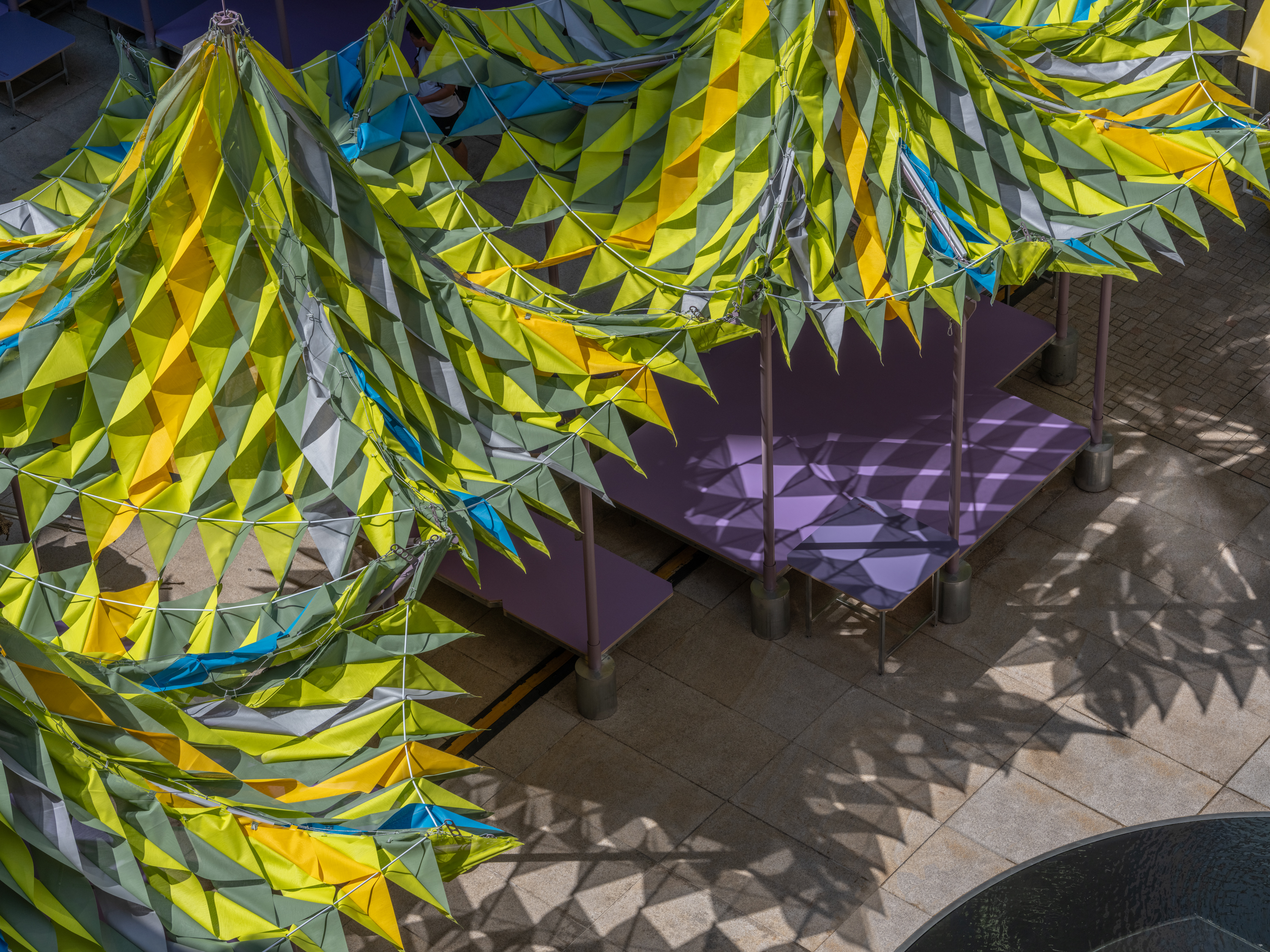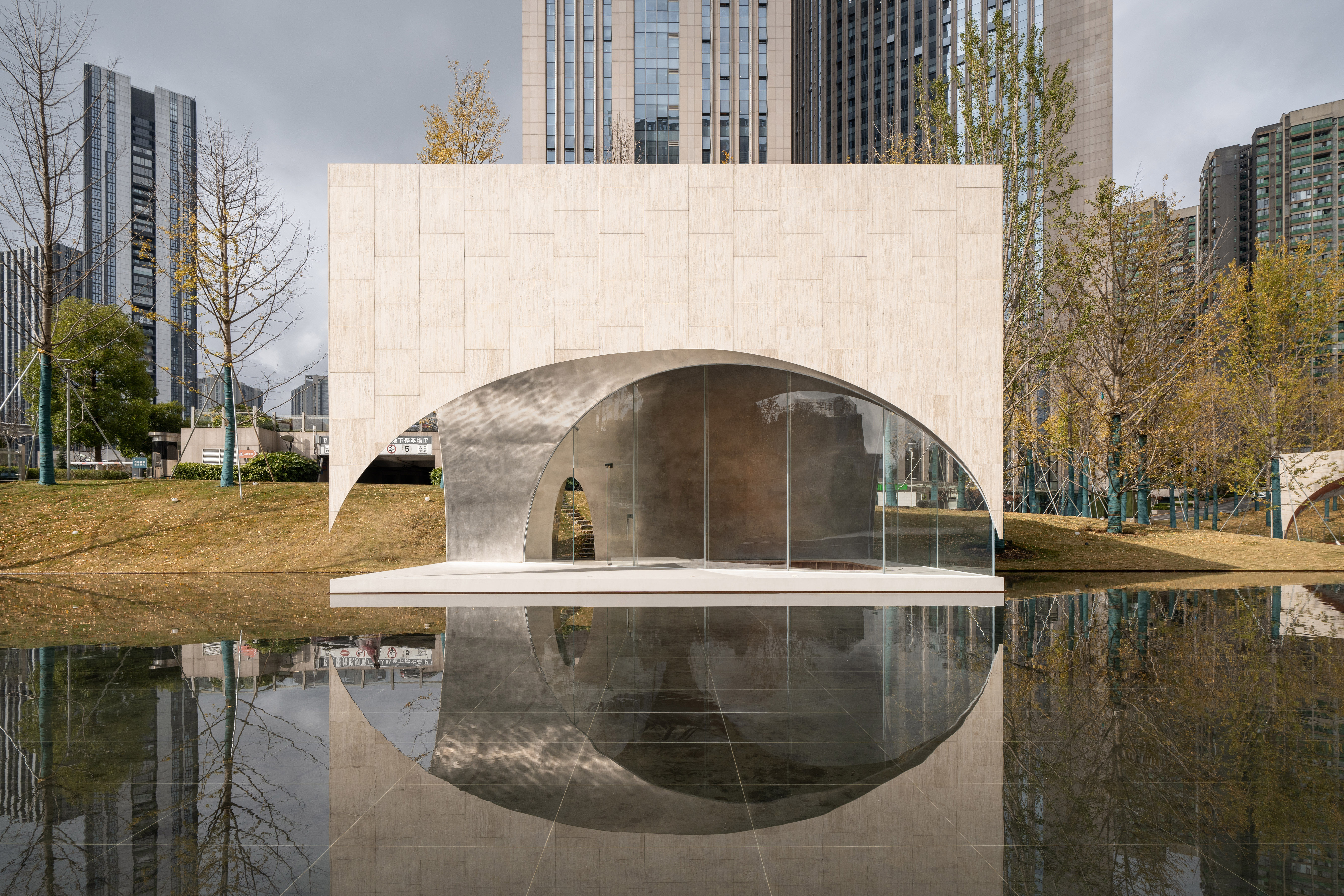Junya Ishigami’s Zaishui Art Museum in China was conceived as a ‘gentle giant’
Japanese architect Junya Ishigami completes Zaishui Art Museum, a kilometre-long building positioned in a manmade lake and aiming to ‘bring the outside landscape in’

The Zaishui Art Museum, a newly opened multipurpose building by Japanese architect Junya Ishigami, comprises a striking, kilometre-long structure emerging from the water in north-east China. The project, housing an exhibition area, visitor centre and retail space, aims to reimagine the relationship between humans and nature.

Zaishui Art Museum by Junya Ishigami
The new facility – intended as a starting point that will introduce visitors to the surrounding and currently-in-development Bailuwan district – consists of two steel reinforced concrete wings that are interconnected yet independent.
The first, a gently undulating structure, almost one kilometre in length, is built within a manmade lake and allows water to flow inside, creating a conceptual ‘indoor landscape’. Its accompanying building is located on the north-west of the site, nestled on nearby dry land. It houses an additional café, restrooms and exhibition space.

Ishigami designed the long, linear main building so that it can integrate with the lake, creating a continuous horizon by drawing water inside the structure itself. The whole aims to bring ‘the outside in’. Its parametric design creates varying heights, widths and slopes ranging from 1.22m to 4.95m high, and 4.8m to 20m wide.
‘In some places, the soft curve of the roof hangs low, contiguous with the lake surface and mountain slopes behind,’ explains Ishigami, ‘and in others, it turns toward the sky, opening up generously and merging the interior of the building into the landscape outside.’

Occupying a total floor plan of 20,000 sq m, the structure is supported by 300 columns positioned in the 2m-deep lake. Floor-to-ceiling glazing across the structure creates lightness and transparency – and panels can be opened in warmer months to allow for natural ventilation.
A small slit located across the lower edge of the glass panels mitigates incoming water levels, while accommodating structural expansion from fluctuating seasonal temperatures.
Receive our daily digest of inspiration, escapism and design stories from around the world direct to your inbox.

Ishigami approached the site-specific design through an inquiry into China’s built environment. ‘The key [was to] view architecture as a “gentle giant” of an environment, and search for a totally new relationship between natural and humanmade.’
He adds, ‘How [can we] bring [them] as close as possible to each other and make the boundary between them as ambiguous as possible. How [can we] make nature the gentlest presence possible for us humans?’

The interior features an elevated concrete pathway spanning the building’s length that mimics a stretch of sand on a beach. Designed 10cm above water level, the indoor walkway features organic curved expressions akin to a real beach.
Inside, rough and textured local sandstone was used for tables and seating. ‘The concept of this building was based on creating a new landscape inside,’ Ishigami says. ‘A new exterior is born in the structure's interior. Thus a new nature, one able to sit gently alongside us, appears inside the architecture.’

The client’s initial brief outlined the creation of a facility ‘in relation to water’, so the architects conducted research into the canals of Venice in Italy, and China’s historic water towns – such as Wuzhen, a 1,300-year-old water village located on the lower reaches of the Yangtze River, where waterways act as streets and riverbanks as markets.
Ishigami notes: ‘At the same time [in these cases], buildings are always on the riverside and there is still some distance from the water. My intention was to create a stronger relationship by building [directly] on the water.’

The museum opened with an exhibition focusing on a local chocolate maker, yet intends to accommodate a variety of shows in the future.
Bailuwan is located in Rizhao, in China's Shandong Province. Zaishui Art Museum is one of three buildings commissioned by the same client for the site; the first two – Forest Kindergarten and Church Of The Valley – remain under construction.

Joanna Kawecki is a Tokyo-based design journalist and consultant. Living in Japan since 2013, she writes extensively about architecture, design and travel, interviewing leading industry figures such as Kengo Kuma and Naoto Fukasawa. She is co-founder of Ala Champ Magazine and design brand IMI Japan, working with craftspersons across the country’s 47 prefectures exploring traditional artisans to innovation entrepreneurs.
-
 In Norway, discover 1000 years of Queer expression in Islamic Art
In Norway, discover 1000 years of Queer expression in Islamic Art'Deviant Ornaments' at the National Museum of Norway examines the far-reaching history of Queer art
-
 The Wilke is LA’s answer to the British pub
The Wilke is LA’s answer to the British pubIn the Brentwood Village enclave of Los Angeles, chef and restaurateur Dana Slatkin breathes new life into a storied building by one of Frank Gehry’s early mentors
-
 Top 10 gadgets of 2025, as chosen by technology editor Jonathan Bell
Top 10 gadgets of 2025, as chosen by technology editor Jonathan BellWhat were the most desirable launches of the last 12 months? We’ve checked the archives to bring you this list of the year’s ten best devices
-
 Wang Shu and Lu Wenyu to curate the 2027 Venice Architecture Biennale
Wang Shu and Lu Wenyu to curate the 2027 Venice Architecture BiennaleChinese architects Wang Shu and Lu Wenyu have been revealed as the curators of the 2027 Venice Architecture Biennale
-
 Tour this Chinese eco-farm, an imaginative wonderland connecting visitors with nature
Tour this Chinese eco-farm, an imaginative wonderland connecting visitors with natureLuxeIsland Farm by Various Associates is an eco-farm and visitor attraction in China’s picturesque Wuhan region; take a stroll across its fantastical landscape
-
 Honouring visionary landscape architect Kongjian Yu (1963-2025)
Honouring visionary landscape architect Kongjian Yu (1963-2025)Kongjian Yu, the renowned landscape architect and founder of Turenscape, has died; we honour the multi-award-winning creative’s life and work
-
 A new AI data centre in Beijing is designed to evolve and adapt, just like the technology within
A new AI data centre in Beijing is designed to evolve and adapt, just like the technology withinSpecialised data centre Spark 761, designed by llLab, is conceived as a physical space where humans and AI technology can coexist
-
 Shanghai’s biennial, RAMa 2025, takes architectural exploration outside
Shanghai’s biennial, RAMa 2025, takes architectural exploration outsideRAMa 2025, the architecture biennial at Rockbund Art Museum in Shanghai, launches, taking visitors on a journey through a historic city neighbourhood – and what it needs
-
 Atelier About Architecture’s ‘house within a house, and garden within a garden’
Atelier About Architecture’s ‘house within a house, and garden within a garden’House J in Beijing, by Atelier About Architecture, is an intricate remodelling complete with a hidden indoor garden and surprising sight lines
-
 A nature-inspired Chinese art centre cuts a crisp figure in a Guiyang park
A nature-inspired Chinese art centre cuts a crisp figure in a Guiyang parkA new Chinese art centre by Atelier Xi in the country's Guizhou Province is designed to bring together nature, art and community
-
 Zaha Hadid Architects’ spaceship-like Shenzhen Science and Technology Museum is now open
Zaha Hadid Architects’ spaceship-like Shenzhen Science and Technology Museum is now openLast week, ZHA announced the opening of its latest project: a museum in Shenzhen, China, dedicated to the power of technological advancements. It was only fitting, therefore, that the building design should embrace innovation